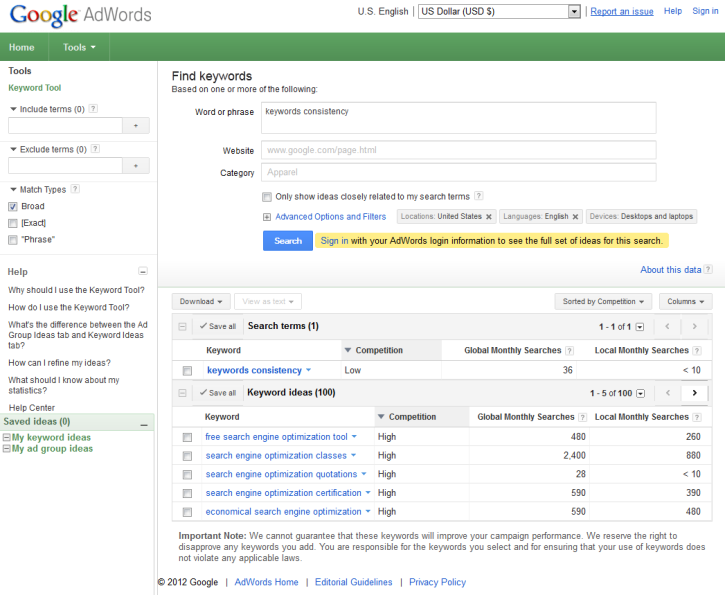Keyword density and consistency are notable factors for optimal page SEO. Preferred keywords should have higher keyword density indicating their importance. Optimally, targeted keywords should be consistently utilized in multiple essential areas of the page such as title, description meta tag, h1 through h6 headings, alt image attributes, backlinks and internal links anchor text.
It is appropriate to note that the keyword density and consistency has decreased its importance over the years due to keyword spamming and stuffing techniques. Also, over time keyword density has proven to be a rather poor measure of relevancy all together and search engines developed more sophisticated ways of understanding page content. Nevertheless, keywords are still an essential part of search engine optimization and should not be overlooked.
How to decide on your keywords?
Each page should have its own set of important keywords and phrases, and those words should always be very relevant to the page content. Deciding on the right keywords can sometimes be a difficult task, fortunately, Google provides a tool for finding keyword related word searches which I have found quite helpful on numerous occasions: https://adwords.google.com/o/KeywordTool

With a keyword tool you can evaluate effectiveness of a targeted phrase by reviewing the average number of global or local monthly searches as well as checking on various keyword ideas.
How to decide on your keywords?
The best approach is to place the most important keywords or a phrase in page title, h1 heading, description meta tag, and in the paragraph content. Be careful not to overuse keywords as this might have a negative effect on search engine listing. Keyword density above 5% indicates that the word or phrase appears too many times in the webpage content. Not only does this annoy internet readers, but may be perceived by search engines as spam. Secondary keywords are less important then primary keywords, but should still not be disregarded. A good location for these keywords is the description tag, <H2> – <H6> subheadings, image ALT attributes and of course in the actual content. Targeted words can also be emphasized by using bold <b> or strong <strong> tags but do not bold keywords that are already in <H1> – <H6> heading tags. For example:
<h1>My Best <strong>Keyword</strong></h1> <!-- don't do this -->
Further keyword optimization can be achieved by utilizing target words as an anchor text in internal links for example navigation links and also in backlinks which are incoming links pointing to your page.
To sum up
Use your primary keywords in the title, description, headings and links but don’t forget that good keywords must be relevant, meaningful and coherent to the content of your website.



